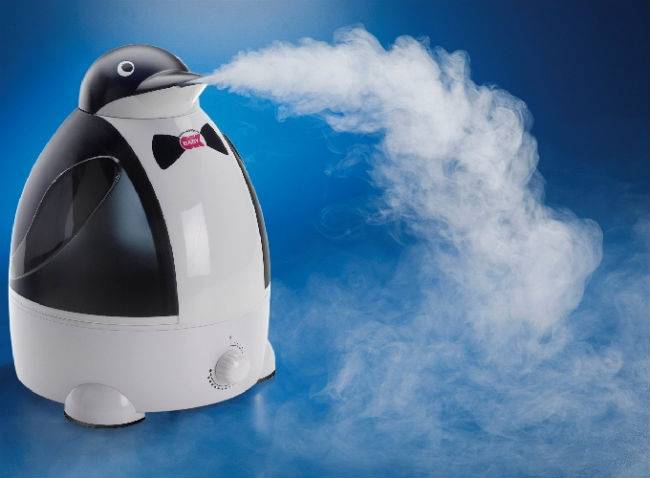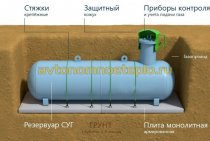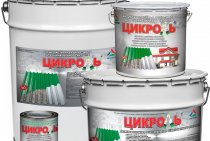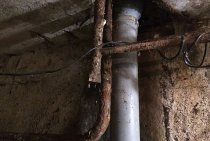Temperature in the room for a newborn Choice of clothes depending on the temperature in the room
Added 05/2017
A fragment of the translation of advice for parents on caring for babies published by the American Academy of Pediatrics (publication of 2015):
-
In cool temperatures (below 23.88 degrees Celsius): the baby needs several layers of clothing to keep warm. As a general rule, it is best to dress your baby in a vest and diaper, put on a jumpsuit/pyjamas on top, and then wrap him in a blanket. You can also use a special sleeping bag as a blanket.
-
In hot temperatures (above 23.88 degrees Celsius): You can reduce the amount of clothing by one layer. It is also recommended to use the rule: dress the child one layer warmer than yourself.
Source here (eng).
From this publication, we can conclude that official medicine considers the optimal temperature for a child from 1 to 3 years old, who is at home in single-layer clothing - 23.88 degrees Celsius.
Ideal temperature and humidity creating optimal conditions
Comfortable humidity and air temperature in the room of a small newborn must be created correctly, focusing on the season. So, in the summer, to regulate air parameters, you can install an air conditioner
It is only important not to direct cold streams directly to the crib
The temperature in both the children's room and the room for adults depends on the beginning of the heating season. If it has not yet arrived, and the house is cold, parents are advised to purchase a heater. In winter, it is extremely difficult to follow the rules, as the premises become excessively heated and “dry out”.
In order for the temperature standards to come in order, experts advise adhering to certain recommendations, which should be discussed in more detail.
Room ventilation
Fresh air is extremely useful for any child, so it is necessary to ventilate the room after four hours.
Especially important is the optimal humidity and temperature for sleep, otherwise the baby will not be able to rock normally and put to sleep.
When airing the nursery, the newborn must be taken to another room.
This helps not only optimize the temperature and humidity, but also saturate the room with oxygen. Another option is to take your child for a walk.
battery closure
If central heating radiators are too hot and it is impossible to reduce the heat level, it is recommended to cover them with special wooden or plastic shields. You can also hang a thick cloth on the batteries.
Getting rid of canopies
A canopy bed is a very cute and aesthetically pleasing structure. However, beautiful curtains can restrict the child's access to oxygen, which leads to an increase in body temperature. To ensure free flow of air, it is best to get rid of the canopy or remove it for the duration of the child's sleep.
Carpets are a well-known dust collector, it is also better to refuse them. In addition, it is worth getting rid of excess furniture, since clutter also disrupts the normal air circulation in the room.
Choosing the right clothes
It is important for the child to choose the right clothes and bed linen.
It is important to refuse to wear synthetic products for newborns. In them, the skin does not breathe, therefore, there is a violation of the thermal regulation of the baby's body
It is better to refuse a hat in general.
In addition, you should not wrap up the baby if the room is hot, and expose him if the room temperature is low. Well, things made from natural fabrics will help create optimal conditions for a restful sleep and active wakefulness.
More frequent feeding
If a newborn baby is too hot, shortening the intervals between meals can help.
It is known that mother's milk contains 80% water, which means that breastfeeding quenches thirst and optimizes the level of fluid in the body.
If the baby is fed artificial formula, between meals, you can supplement it with water using a bottle.
It is important to ensure that the liquid is at room temperature
washing
In summer, it is extremely difficult to provide optimal conditions, the child is hot and dry. In this case, you need to bathe the baby up to three times a day, but not for the purpose of cleanliness, but to improve well-being. Naturally, there is no need to use detergents.
Humidity increase
As already noted, humidified air is no less important for a newborn than the optimal temperature regime. You can create comfortable conditions with the help of technical devices or improvised means.
Experts advise:
- install a special humidifier;
- more often to carry out wet cleaning of the room;
- place water containers, fountains next to the child or batteries;
- spray water with "sprinklers";
- cover radiators with wet towels or sheets.
The air temperature in the room of a newborn child is an important condition for well-being, health and emotional mood. Do not forget to monitor the state of the environment, and the baby will develop without any problems to the delight of parents.
Danger of dry air
Dry air in the apartment affects the baby extremely negatively and forces the body to use additional resources. The level of humidity in the room is influenced by certain factors:
- change of season;
- change of weather conditions;
- building materials, with the help of which the decoration of the premises and the facade of the building was carried out;
- air conditioning and heating systems.
Due to the increased temperature in the room, the child loses a large amount of moisture due to sweating, and the need to humidify the inhaled oxygen contributes to an even greater loss of residual fluid resources. The hot season and the dryness of the room are fraught with the following consequences for the baby:
- sleep problems;
- increased gas formation;
- capriciousness;
- dysbacteriosis;
- diseases of the genitourinary system.
The temperature in the room for the newborn The arguments of the supporters of COOL mode
According to many experts, in hot weather, the likelihood of getting sick is much higher than in moderate temperatures or even cold. In this regard, many modern experts recommend 18-20 ° C for the permanent stay of children. They argue their position by the fact that heat is a favorable environment for the development of viruses. At the same time, when overheated, the body directs all resources to cooling. Thus, while the body is busy with thermoregulation, viruses have every chance to grow to the scale of the disease. The arguments are quite convincing, but I want to ask the question “Why do people get sick less in summer?” ? .
Recently, the recommendations of the well-known Doctor Komarovsky, who recommends maintaining 18-19 ° in the nursery for newborns, have become increasingly popular.
At the same time, he emphasizes that 18-19 ° is comfortable air for breathing, but not for a child to be without clothes. It remains a mystery how, with such a coolness in the nursery, to carry out countless changes of clothes for the baby, as well as rest “with a bare booty” from the diaper
In my opinion, this recommendation is out of date.
The pioneer in recommending low temperatures for children was I.A. Arshavsky. In his writings, he developed the theory of using the adaptive mechanisms of newborns in order to strengthen immunity by early hardening methods. In fact, how much hardening is necessary for a newborn is a moot point, therefore, before considering its expediency, I propose to study the opinions of supporters of a comfortable temperature regime.
Danger of low humidity
Low moisture content in indoor air negatively affects the well-being of all newborn children. Parents often do not notice the reduced rates of this parameter, but the child reacts sharply to any discomfort.
The reduced level of humidity in the room leads to a sharp dusting of the air, an increase in the number of pathogens and allergens. Most often, the results of dehydration are various negative conditions:
- Asthma. When the body is dehydrated, parts of the lungs can be damaged, resulting in chronic inflammation of the respiratory system.
- Allergic diseases. In case of lack of moisture in the body, the level of histamines in the circulatory system increases. An allergy occurs, which can manifest itself as a rash, rhinitis, itchy sensations.
- Dry skin. Dehydration damages the top layers of the skin, resulting in dry spots on the child's body.
- Dryness in the mouth and nose. Due to low humidity, the airways dry out. Dry crusts form in the nasal cavity, the child begins to cough.
- Thickening of the blood. The volume of fluid decreases, the blood begins to thicken, which is extremely dangerous for the entire child's body.
Thus, it is extremely important for an infant to be in a room with optimal humidity level. This is not just a whim, but the most important condition for normal child development.
Be sure to remember this!
Optimal room temperature for babies
Room temperature
The opinion of experienced professionals who argue that the room temperature where the newborn baby is located should not be higher than 18-22 ° C is unlikely to be disputed by anyone. Under these conditions, the baby breathes easier, he eats well, does not overheat and develops in natural conditions.
In winter, when the heating season begins in the apartment, and temperature fluctuations are possible, the permissible threshold should not exceed 23 ° C.
Sleep temperature
The sleep of a newborn baby directly depends on the temperature in the room. In both cold and hot bedrooms, the baby's sleep is superficial. The baby often wakes up, is naughty, requires constant attention. Parents need to make sure that the children's bedroom has a constant temperature of 18-20 ° C.
These recommendations should not be considered as an unshakable rule. Each baby is an individual organism with its own characteristics. Someone likes to sleep in a warm room, and for someone 18 ° C is quite a suitable temperature for sleep. Therefore, parents should observe in what conditions the baby sleeps better, and try to adhere to them.
The modern bed of the newborn is supplied with sides and a canopy. These options look beautiful from the outside, and it seems to parents that the baby is cozy and comfortable. Perhaps this is indeed the case, but these objects collect dust, do not allow air to circulate normally. Therefore, it is advisable to refuse them.
Bed linen and clothes for the baby should be selected from natural materials. Synthetic products do not allow the skin to breathe, which means that the thermoregulation of the skin is disturbed. The little one doesn't need a hat at all. In a hot room, you should not wrap the baby; in a cool room, you do not need to expose the baby.
Bathing
Often, parents before bathing a newborn child increase the air temperature in the bathing room, heating it in all possible ways. However, this is wrong. If the temperature is high, then in the usual conditions the baby will freeze after bathing. To avoid this, a special temperature increase is excluded.It is much better to wrap the baby in a warm towel after washing and stand for a certain time. Favorably affects the body of crumbs hardening. Therefore, mothers do quite well, accustoming the baby to air baths after bathing.
Tips from E. O. Komarovsky
The series of articles talks about the features of thermoregulation of babies, about observing the percentage of humidity in the nursery. Most Russians live in the middle lane, where it is cold for nine months of the year, that is, most of the year is occupied by the heating season. The air in the room is dry, there is not enough moisture by about 2 times. Remember that the air in the room should be humidified by 50-70%.
Special attention to E.O. Komarovsky removes drafts or through wind, which completely blows the room
A stream of air does not pose a danger to either humans or any biological species, he believes. This danger was invented by mothers who are very worried about their child. They protect the child from drafts, like an exotic plant, but this is not necessary.
From the foregoing, we conclude that humidity is of great importance for a newborn and maintaining it is an important task for loved ones. But we should not forget that the indicators of humidity and temperature are inseparable. Both of these factors must be taken into account. By creating comfortable conditions for the child, you will watch him grow strong and healthy.
Studies have shown that for children in the first six months of life, the optimal temperature in the children's room is + 22 ° C, and for children in the second half of the year - + 19 - 20 ° C. This temperature has a positive effect on metabolic processes and thus on the growth and development of the baby.
To create the optimal air temperature, the room must be regularly ventilated.
Ventilation not only changes the temperature, but also “refreshes” the air, which is very important, since a decrease in the oxygen content in the inhaled air affects a child more than an adult. In young children, oxygen consumption is 2.5 times higher than in adults
In the cold season, it is recommended to air the nursery 4-5 times a day for 10-15 minutes. Through ventilation quickly updates the air in the room and is carried out in the absence of a child. An indicator of the effectiveness of ventilation will be a decrease in air temperature by 2 - 3 degrees compared to the original. In the warm season, when there are no significant temperature drops when opening windows, they can be kept open during the day.
When creating optimal conditions in the room, remember about humidity. The limits of normal humidity for a newborn lie within 50-70%, and for children 10-12 months old - 40-65%.
Given the peculiarities of temperature regulation in infants, it becomes clear that the high humidity of the premises contributes to overheating of the child. This reduces the heat transfer by sweating. At low humidity, the mucous membranes of the upper respiratory tract dry out. The child becomes more vulnerable to infection. If an infectious disease occurs, increased dryness in the room will exacerbate the disease. Drying of the resulting discharge makes it difficult to remove.
Humidity in the room can be determined by special devices or, approximately, by the condition of the plants that are in the room. If plants need watering more often than usual or they develop diseases associated with excessive dryness, then the room needs to be moistened. The easiest way is to spread wet diapers on a steam heating battery.
Types of humidifiers for the home, an air conditioner with an air purification and humidification system as a more powerful and perfect device
Maintaining a dry-moisture balance in your home with a home humidifier is important to your well-being, and while reducing moisture levels can be beneficial, too much humidity can be hazardous to your health. Below is a complete list of tasks that a special humidifier can handle:
Below is a complete list of tasks that a special humidifier can handle:
- leads to the "golden mean" relative humidity in the premises;
- eliminates electrostatic charges;
- contribute to the creation of a favorable microclimate in the apartment, house;
- prevent the development of respiratory diseases;
- have a beneficial effect on the skin, preventing the aging process.
They are of several types:
- Cold steam humidifiers or traditional humidifiers: humidification occurs due to the evaporation of cold water, which is poured into the tank, from where it is driven through special filters by a fan. Water for such a humidifier must be well purified, and preferably distilled, otherwise the filter will quickly become clogged and fail. The main advantage of the traditional model is that, depending on the level of humidity in the room, the device can independently regulate the rate of water evaporation.
- Steam humidifiers: humidify the air due to steam evaporation, the steam temperature is 50-60 ° C, if the water boils away completely, the device turns off by itself. Such humidifiers are not recommended for children, houseplants.
- An ultrasonic humidifier for the home is the most popular and perfect model today. In addition to the fact that such a humidifier is suitable for any type of room, it is very efficient, silent, compact and safe, and it also “eats” little electricity. However, its use requires demineralization of water, for which special cartridges with an ion-exchange resin are used, or only distilled water is poured into them. If these measures are not taken, after the smallest droplets of water with salts dissolved in it dry, a white coating may form on furniture and other surfaces. The principle of operation of an ultrasonic humidifier for the home is based on the vibration of the membrane, upon contact with which water is sprayed.
- The device "air washer": combines the functions of humidification and air purification. The principle of operation of such a device can be compared with a vacuum cleaner that performs wet-mechanical air purification. Inside the device there is an ionizing silver rod that purifies the air from dust, pollen from flowers and other allergenic particles. It is easy to handle. With all its advantages, it has a significant drawback: air humidification can be raised to no more than 60%.
It's important to know
The humidifier must be sized for the size of the room. Otherwise, you may add too much moisture to the air.
A humidifier with adjustable humidity control will help with moisture balance. Most humidifiers have a suggested room size on their packaging. So before buying a humidifier, take a quick measurement of your room.
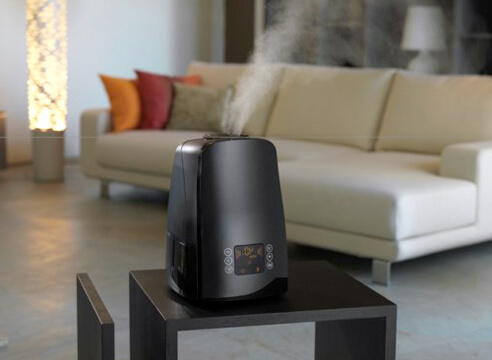
Such a system condenses moisture from outdoor atmospheric air and directs it into the room, so there is no need to constantly add water to the device, which, moreover, must be purified.
The high intensity of operation of this air conditioner allows you to quickly and evenly humidify the air in large areas, the incoming outdoor air passes through two cleaning units. A powerful ventilation system built into air conditioners with humidification and air purification contributes to the constant renewal of the atmosphere in the room.
The only negative side of such models of air conditioners is their high price. However, today it is the best way to normalize the climate in any home.
As a result, in order to control the humidity of the air in the room, it is necessary not only to take into account its size, but also to set clear goals: it is necessary to create a comfortable atmosphere in the house or prevent the development of diseases and allergies in the baby. As you can see, modern technologies are easily ready to cope with any problem.
How to keep the temperature in the room
To achieve the optimal temperature regime, you need to determine which temperature is more acceptable for the child. Every child feels differently even at the same temperature. Determining which room temperature is right for your child is quite simple:
- The child feels well, sleeps peacefully;
- The child does not blush, does not sweat;
- The hands and feet of the baby are not cold, the baby is not covered with "goosebumps";
- The breathing and pulse of the newborn are normal.
If the temperature in the room deviates significantly from the permissible limits, measures must be taken to regulate the temperature regime.
- If the room is hot, you can regulate the temperature with ventilation or air conditioning. Naturally, the child should not be in the room at the time of airing. It is advisable to take a walk with the baby at this moment. The air conditioner can be installed in the next room or in another part of the room where the child is. The main thing is that the baby does not fall under direct streams of cool air. Hot batteries are recommended to be covered with a thick blanket or blanket.
- If the room is cool, then you can achieve the desired temperature with the help of heaters.
Ideal room temperature for a newborn
As evidenced by the analysis of pediatric sources, the optimal temperature parameters for the room in which the newborn child is located are within 18 - 20 ° C. In this case, all biochemical processes in the child's body will proceed quite naturally, without any failures.
TV doctor E. O. Komarovsky is convinced that the higher the temperature in the nursery, the worse it is for the child. Overheating of children is no less, and even significantly more dangerous than hypothermia
This is very important for every parent to remember.
To control the parameters of the air in the room, the thermometer should be placed next to the cradle of the newborn, and the hygrometer (a device that determines what humidity is in the room) away from all heating devices.

Despite the available recommended air indicators in the apartment, parents should, first of all, focus on children's well-being. That is, the temperature in the room should “like” the baby, should correspond to the characteristics of his body.
If the temperature in the room is within the normal range, but the child's lower and upper limbs are getting colder, socks and extra clothes should be put on. If the newborn sweats and blushes, it should be unwrapped.
For an infant who was born ahead of schedule, it is necessary to create special conditions due to insufficient thermoregulatory processes. Therefore, the temperature in a room with a premature newborn will be above 20°C.
Ways to humidify the air, control and measure the level of humidity at home
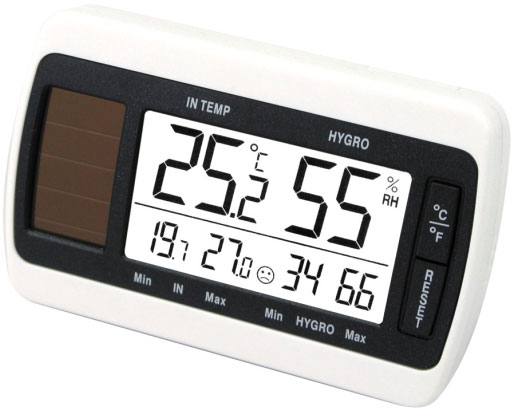
During cold winters, the heating system can make the air in your home too dry, making it uncomfortable for you.
It can also cause cracks in wood and drywall products.
To improve air quality, you can install a humidifier in the room you spend the most time in or throughout your home.
In the summer, when the room is not heated, depending on the climate in your area, there may be either too much or too little moisture in the house.
The following measures are necessary to manage humidity.
- Ventilate the room regularly. However, despite its simplicity, this method is not the most effective.In summer, the air is not too saturated with moisture, and ventilation does not contribute to air humidification. But in winter, windows open for 5-10 minutes will allow you to achieve a comfortable level of humidity for a person. The wider the windows are opened, the faster the room will be ventilated, in addition, the air during this time will have time to update with minimal heat loss, unlike a window left open for a long time in the room.
- Increase the number of indoor plants that have a beneficial effect on air humidification, and are also a kind of natural “device” that can measure air humidity: wrinkled and dried leaves are an indicator of an overdried atmosphere. Plants perfectly ionize the air, and some of them, in addition to moisture, are able to release organic substances that clean and disinfect the space.
- The presence of an aquarium in the room also helps to maintain a normal level of humidity, only it is necessary to regularly top up the evaporating water.
- Do wet cleaning, ideally - in the morning and in the evening.
- Place vessels with water in the apartment, it is best to do this on the windowsills, near the central heating radiators.
Evaporating water is a good means of humidifying the air. Unfortunately, this is far from hygienic and in most cases not at all aesthetic.
How to determine the humidity in the apartment on your own, to understand whether there is a need to dry or humidify the air? You should systematically monitor the microclimate and the level of humidity in your home.
How is humidity measured at home?
Basically, for these purposes, a special device is used to measure the humidity of the air in the room - a hygrometer. Today there are several types of hygrometers based on different operating principles. They can look like a small wall or table clock, have a mechanical or electronic display, and can be combined with thermometers to measure room temperature. For a hygrometer, first of all, the accuracy of the readings is important. The maximum deviation in measurements should not exceed 1%, today's electronic hygrometers are quite accurate, only the device must be installed away from drafts.
In the absence of a special device that measures air humidity, you can find out this indicator using a simple glass beaker and water. To do this, you need to fill a glass of cold water and put it in the refrigerator until the temperature of the water in the container cools down to 3-5 ° C.
The cooled glass should be placed in a room away from the heating source and observed:
- if the condensate is completely dry after 5-10 minutes, the air in the room is very dry;
- if after 5-10 minutes the condensate has collected into large drops on the walls of the glass and flows from them in streams, the air in the room is excessively humid;
- normal humidity in the room in the event that after 5-10 minutes the condensate has not dried up, but has not dripped either.
Thus, the glass and water turn into a handmade hygrometer.
An ordinary mercury thermometer is another way to measure air humidity at home without a hygrometer, but this process is quite laborious.
It is done in 2 stages:
- The temperature in the room is measured and the readings of the thermometer are recorded.
- The head of the thermometer is carefully wrapped with wet cotton wool or gauze, left for 10 minutes, then the temperature is measured again.
- Find the difference between "dry" and "wet" temperatures and a special table is used to determine the humidity in the room.
The easiest way to humidify the air today is to purchase a special device, some of which are additionally equipped with a humidity meter.
Use of humidifiers
It is not necessary to run with a wet rag around the nursery or arrange buckets of water, because progress does not stand still. Humidifiers have come to the rescue.They do an excellent job of providing the necessary humidity in the room.
Before running to the store for a humidifier, let's get acquainted with their varieties:
- Steam, which work on the principle of a kettle. They have a built-in heater and fan, thanks to which moisture evaporates. The humidifier will automatically turn off when the liquid is used up. Among the shortcomings, high power consumption and burns are noted.
- Ultrasonic, working silently, having a small size and quickly humidifying the air. They work due to the current of ultrasonic frequency. When the optimum humidity is reached, the device switches off automatically. The disadvantages include the use of only distilled water. With ordinary water, the salts that it contains will get into the air.
- Cold, humidifying air according to the principle of normal evaporation. Water first enters the plates, and then with the help of a fan - into the room. These are quiet devices that consume little energy. Unfortunately, they are large and expensive.
The choice is up to parents, since the range of humidifiers is huge, each of them has a number of advantages and disadvantages. But by purchasing any kind of device, you will always be sure that you will provide the necessary air humidity in the child's room.
conclusions
Thus, the temperature in the nursery is important for a newborn, but its indicators are calculated individually, after talking with a pediatrician and studying all the subtleties of the issue.
Room temperature and humidity are the most important environmental parameters that provide comfort, full life of a newborn child and even his health.
Mothers, knowing this, try to create ideal conditions for their beloved baby. First of all, parents are afraid of hypothermia, so they do everything possible so that the child does not freeze - they put heaters in the bedroom, put several diapers and sliders on him.
However, efforts to "warm" the child often end in overheating of the child's body, which can sometimes do more harm than hypothermia. That is why it is necessary to understand what air parameters will allow the baby to develop optimally.
